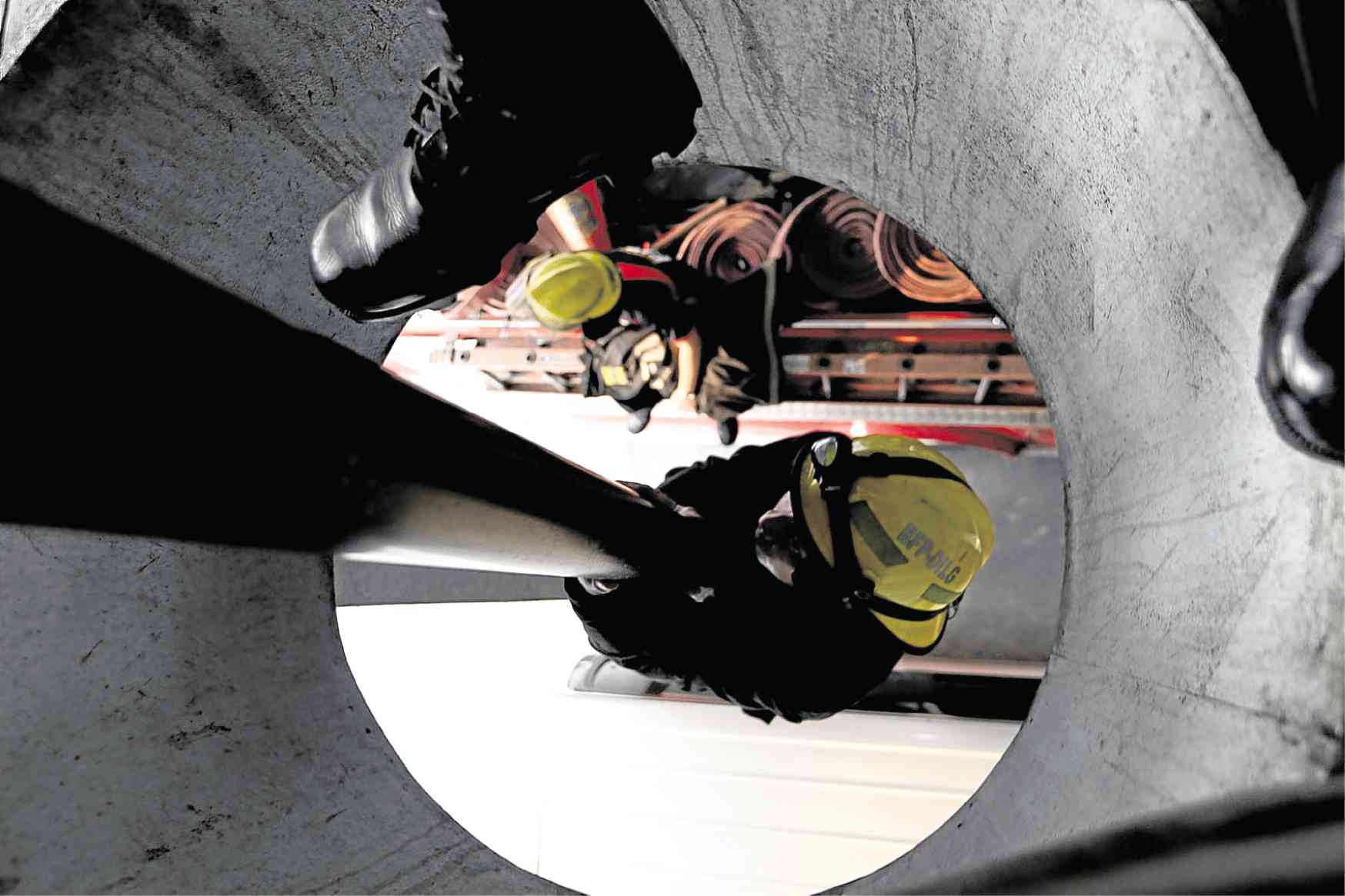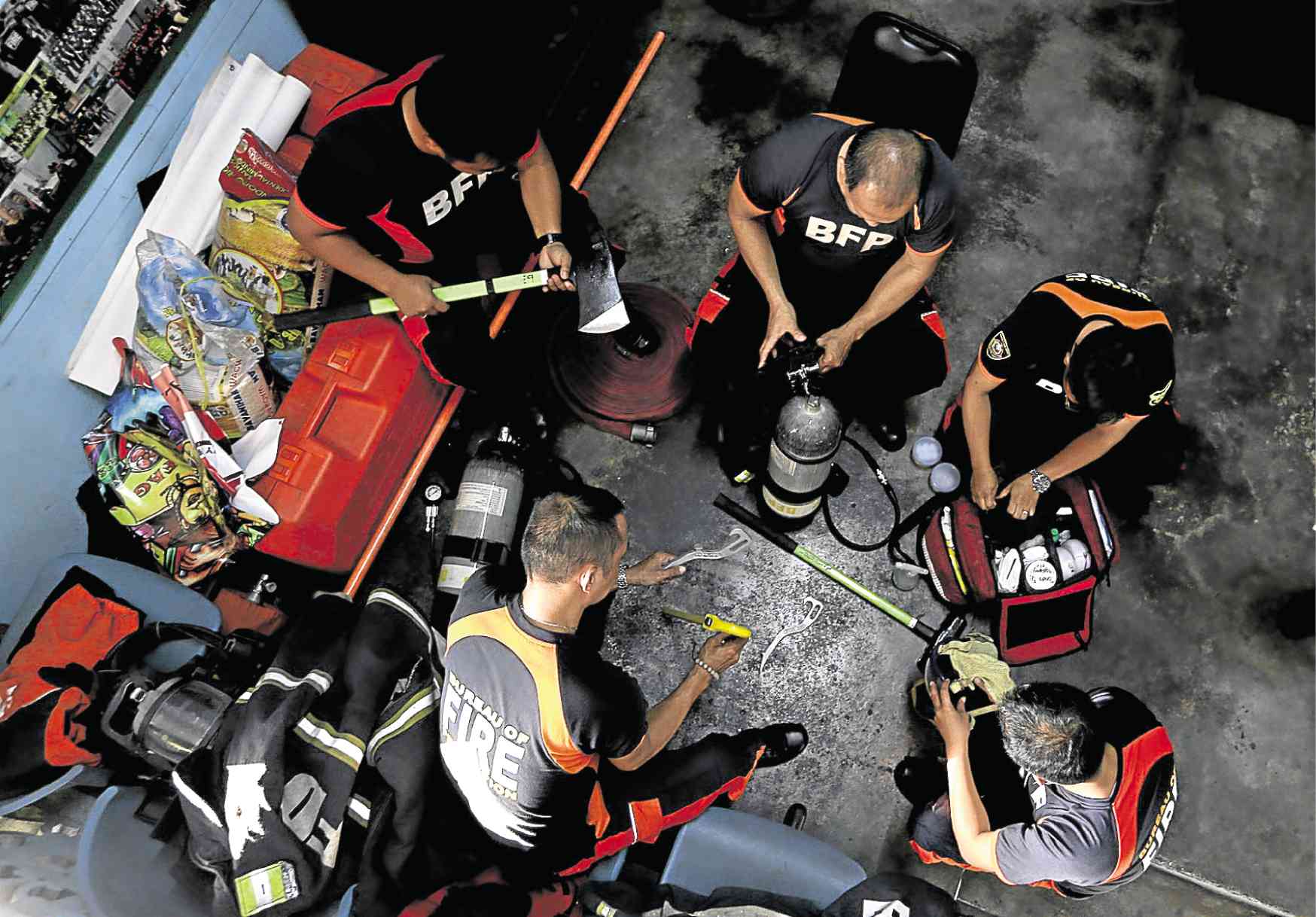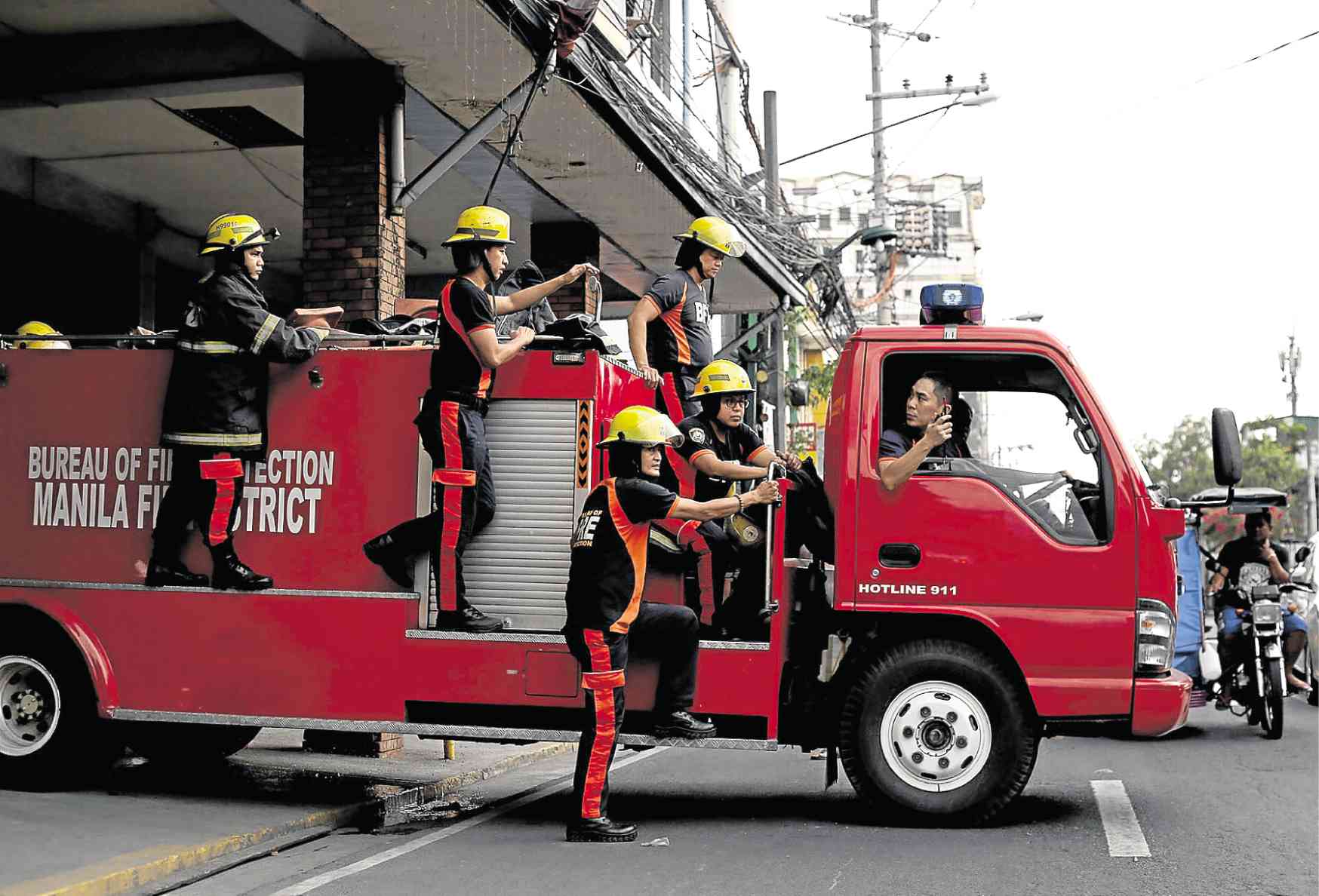Tales behind the smoke: Firefighter recalls memorable incidents
He was still a rookie, recalled FO2 Lords Ramos Hernandez, when the Smokey Mountain fire hit Tondo, Manila, in 2001.
What he had thought was a routine duty call turned out to be one of the most dangerous fires he had faced in his almost 20 years as a firefighter.
The fire at the sprawling garbage dump caused by methane gas was suffocating his team, Hernandez recounted.
“There was zero visibility and we had gotten scared,” he said.
Fortunately, other firefighters came to their rescue and managed to pull them away to safety before they were overcome by gas and smoke.
Article continues after this advertisementBut it took the team from Gagalangin Fire Station more than a month to totally put out the fires that would burst out sporadically from the mountain of compressed trash.
Article continues after this advertisementHe has faced down some 2,000 fire incidents and seen some 300 casualties from fatal fires so far, said Hernandez, a criminology graduate and the first firefighter in a family of police officers.

Firefighters clamber down the pole to meet the ideal response time of one minute from the sound of the alarm.
With the onset of the dry season, he said he expected more fires in what had ironically been declared in 1966 Fire Prevention Month.
Data from the Philippine Statistics Authority indicated that from 2012 to 2016, there were more fires and an average of 43 reported fire-related deaths during the month of March, higher than most other months during the five-year period, followed closely by April and May.
The three months are considered the hottest and driest, when temperatures peak, heightening the risk of fire.
Top three causes
Statistics indicate that most fires start from residential structures because of the presence of fire hazards ranging from defective liquefied petroleum gas (LPG) tanks to stored plastic and paper materials, combustible liquids and overloaded electrical outlets.
The Bureau of Fire Protection (BFP) identifies the top three causes of fires as faulty electrical connections, carelessly thrown cigarette butts and open flames from unattended stoves and candles.
Based on his own experience, Hernandez said that 70 percent of fires were electrical in nature, 10 percent erre caused by the explosion of LPG tanks, 10 percent by open flames like unattended lit candles, and 5 percent by negligence like smoking in bed or allowing a child to play with matches. Arson is suspected in 5 percent of the fires.
Informal settlements or slums are most vulnerable to fires, Hernandez said, citing congestion and overcrowding, homes made of light materials, the use of illegal wiring connections or jumpers, and the lack of knowledge when it comes to fire safety.
“That’s why the BFP has launched ‘Oplan Ligtas na Pamayanan’ this year, which will have fire safety officers going to inner barangays to identify fire hazards and share fire safety tips,” he said.
Ideally, a fire department should respond within one minute after a fire call, but narrow streets can sometimes cause delay and lead to desperate measures, Hernandez said.

The Gagalangin Fire Station crew checks out their firefighting tools and protective personal equipment between fire calls. —RICHARD REYES
At gunpoint
“We’ve had unruly residents point guns and knives at us to force us to protect their houses first,” he recalled of his experience in urban poor areas.
Despite such episodes, he said that after a fire, firefighters were more likely to be offered food and water by slum dwellers than those from middle-class or affluent areas “who seem to be more concerned about their property and belongings.”
But rich or poor, Filipinos become very religious during fires, Hernandez said. “From my experience, they call on all the saints and flee their homes holding Sto. Niño or Mother Mary statues.”
Like most firefighters, Hernandez, 43, underwent four months of rigid military-like training that included learning the skills of a medical first responder, familiarity with fire-related laws and water survival.
Still haunted
Despite that and his 20 years’ exposure to fires of various origins and intensity, Hernandez admitted that he was still haunted by unforgettable images from various fires.
He cited the 2008 blaze at a Sampaloc, Manila, boarding house that killed 10 students. “We found all the bodies in one room, burnt beyond recognition,” he said. “The cause of the fire was a plugged electric fan that overheated on the ground floor of the two-story structure. All the victims were apparently drunk when the fire occurred.”
Another fire stuck to his mind, Hernandez said, but for a totally different reason.
“My team rescued Horacio ‘Atio’ Castillo when [their] house was gutted by fire in December 2005,” he said. “I became friends with the family since then. And it was so sad to learn that in 2017, Castillo, then a UST law student, became a victim of hazing. To think that the boy we had rescued in that fire would just be killed by a so-called brotherhood.”
Common sense helps prevent most fires, like unplugging appliances, especially electric fans, before sleeping or leaving the house, Hernandez said.
Although arson is always a possibility, it is difficult to prove, he said, adding that the BFP has an arson lab that “scientifically determines the presence of flammable liquids at the scene.”
Most fire deaths are caused by the lack of fire exits in a building, Hernandez said, as well as the lack of shared protocol among family members should a fire occur.
Not the CR
“Every family should have a plan, even one as simple as having a flashlight and whistle by the bed to warn each other of a fire. Family members should also be advised that the comfort room is far from being the safest room during a fire. In fact, I’ve personally seen dead bodies crammed in the CR after a fire. It was the smoke that killed the victims, not the heat of the fire,” said this fire safety inspector and concurrently engine OIC of Gagalangin Fire Station.
For Hernandez, for whom the fire station has become much like a second home because their 24-hour duty alternated with a 24-hour off duty, firefighting has become more than a profession. “It has become a passion,” he said, despite the many challenges faced by fire stations in the country.
There is the lack of equipment, such as self-contained breathing apparatus that firefighters are required to have every time they respond to fires, and other protective personal equipment like fire helmets, trousers, bunkers and fire boots.
“We’re happy that many fire volunteers from the private sector have served as force multiplier during fire incidents,” he added.
